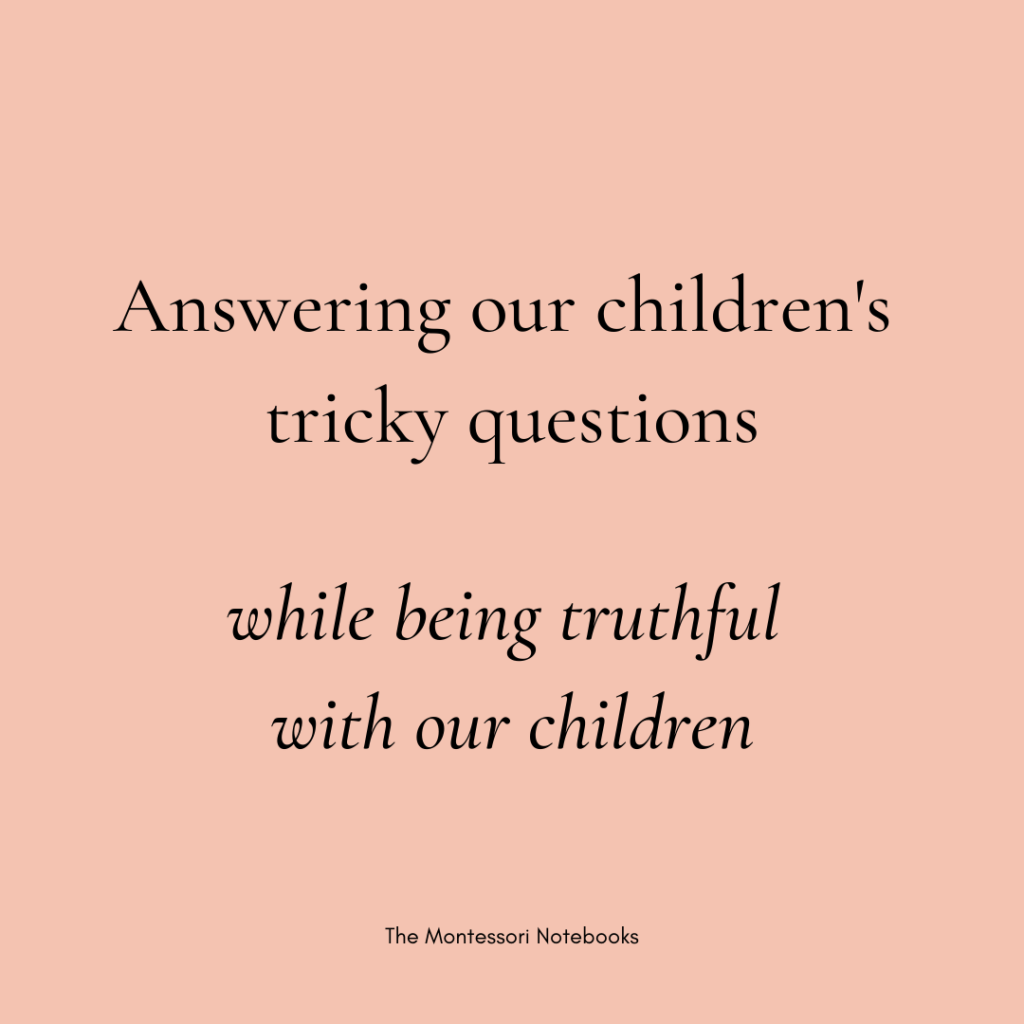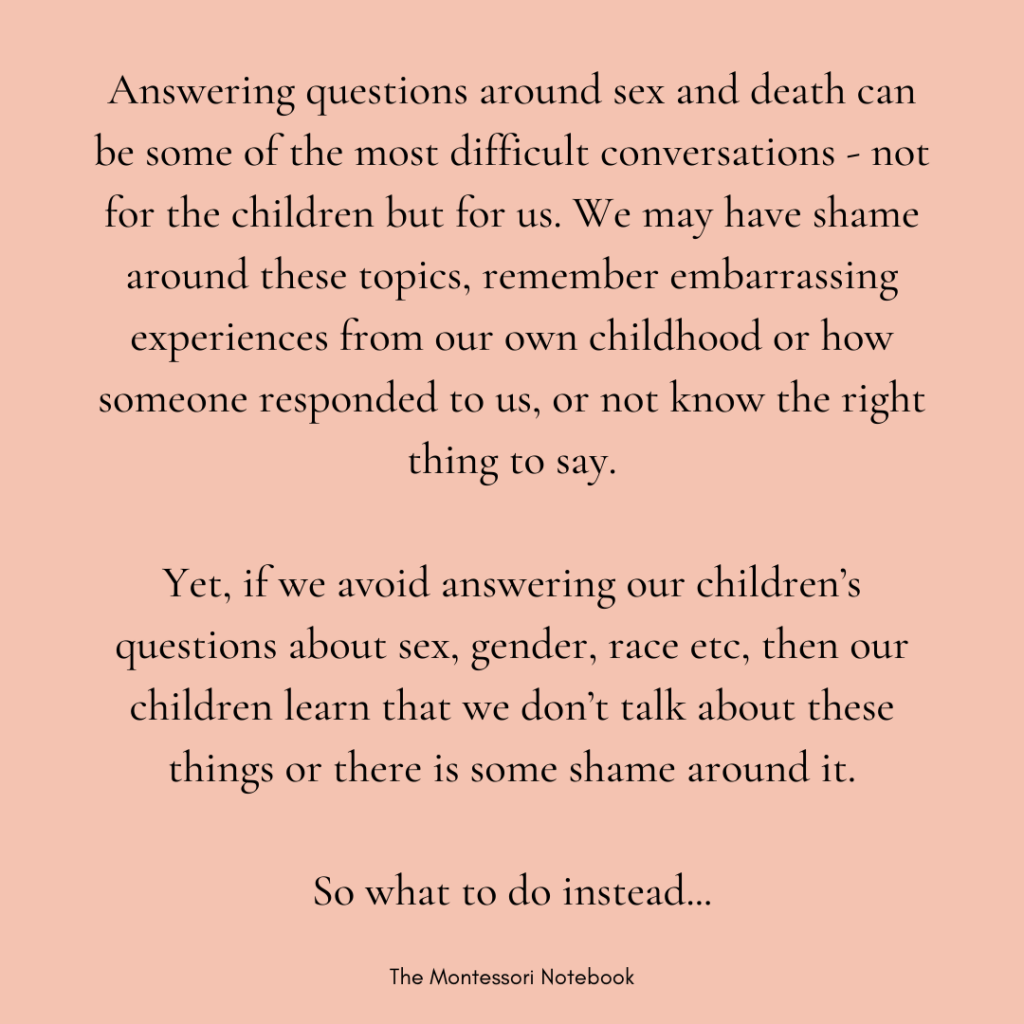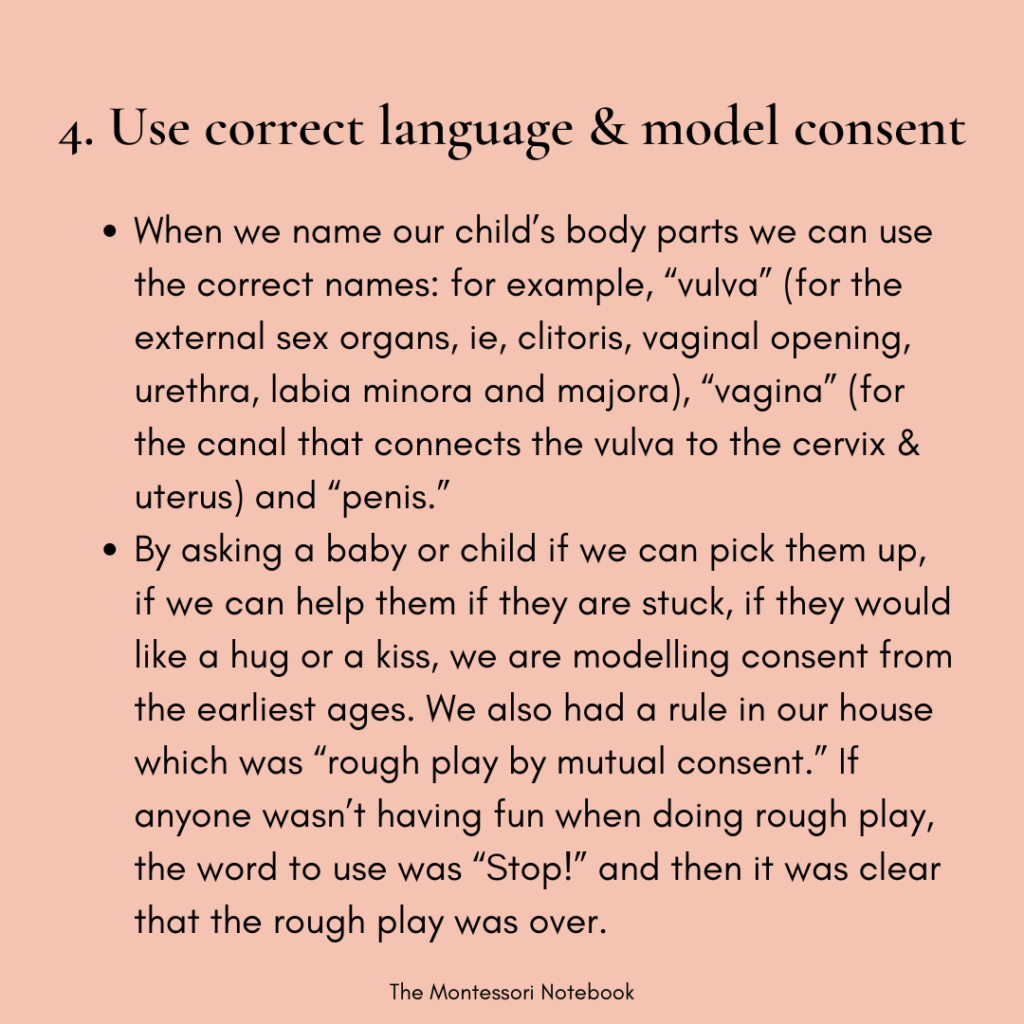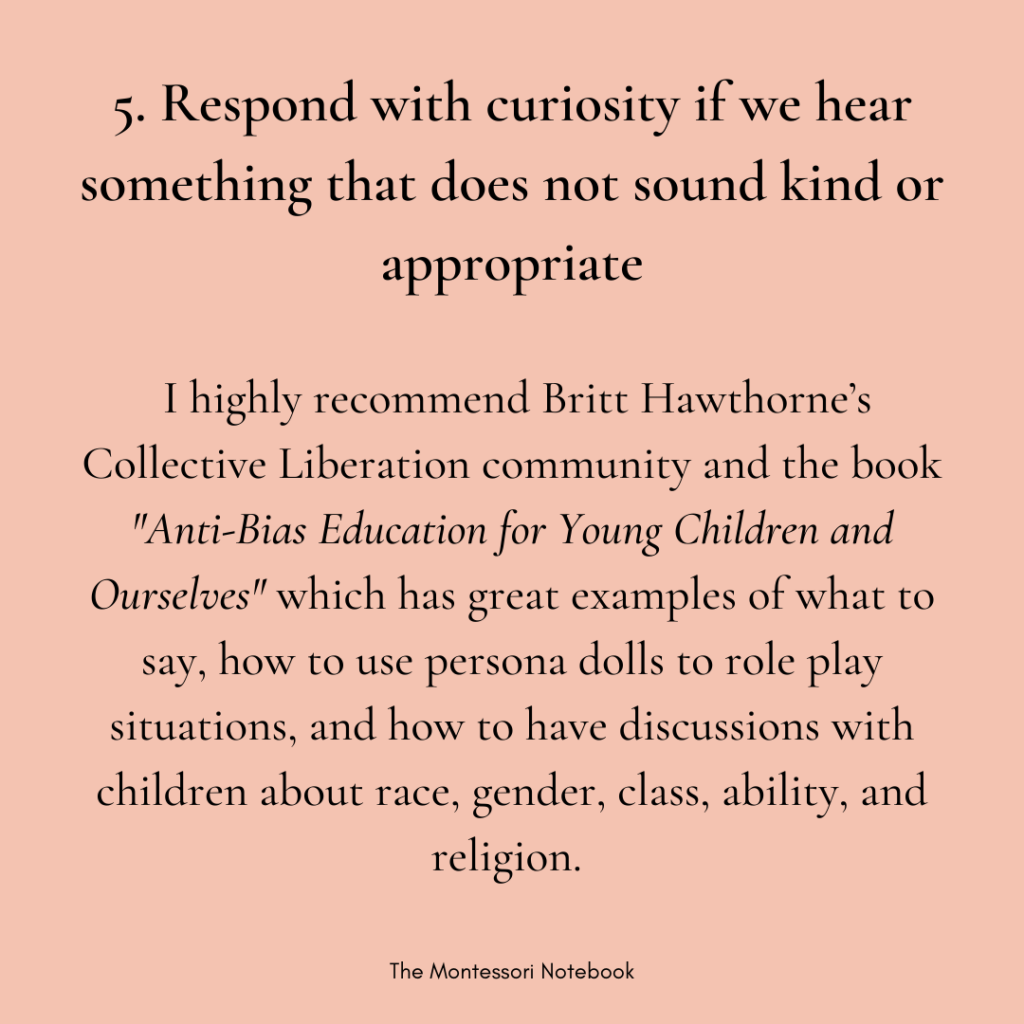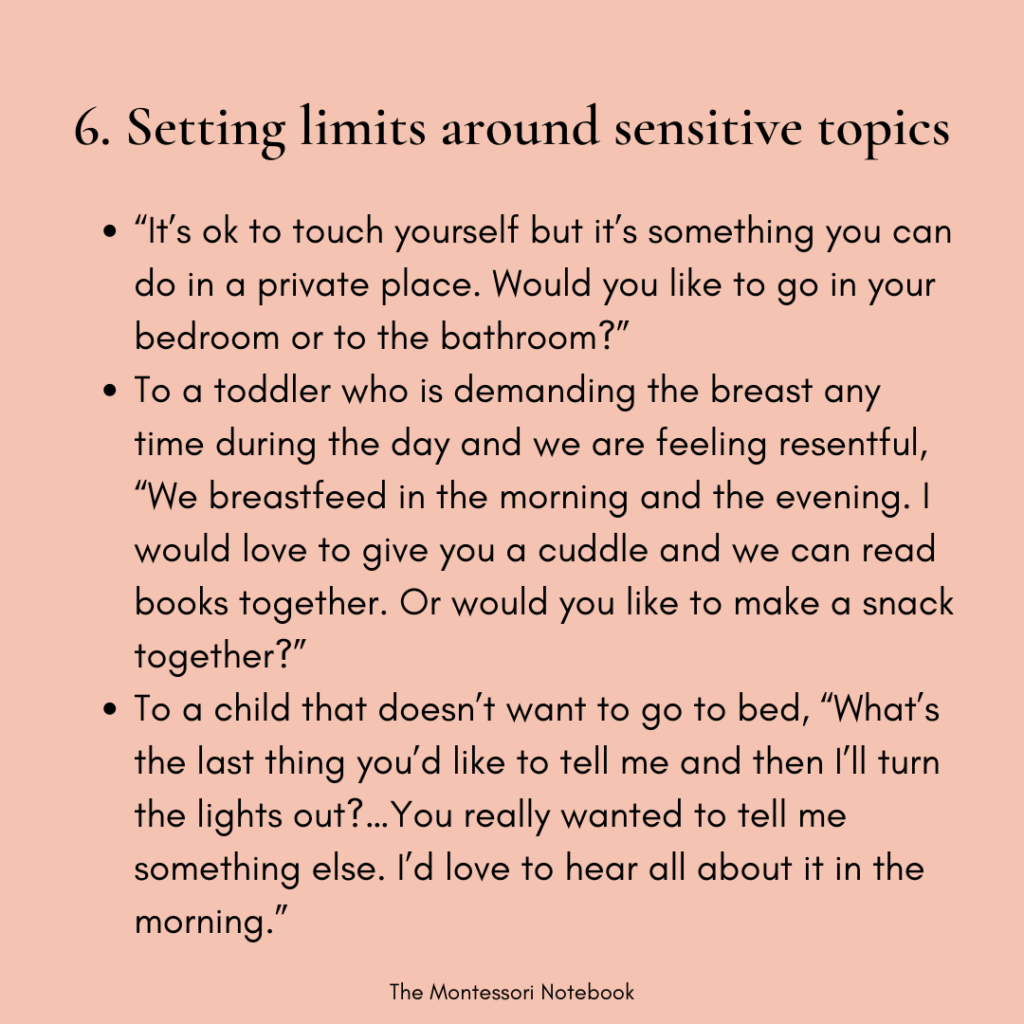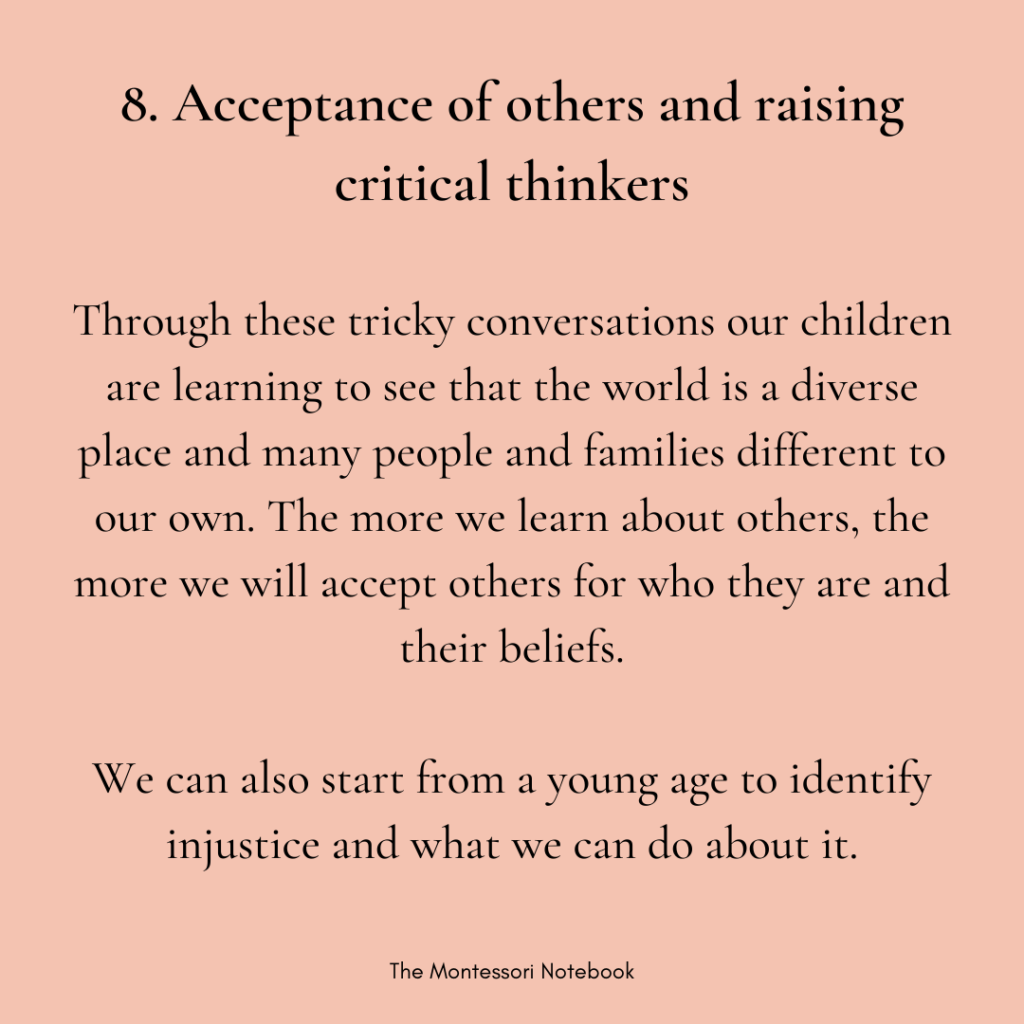Answering our child’s tricky questions
I think many of us value honesty and find telling the truth very important. Yet children ask tricky questions at times and we aren’t sure what to say and at other times it feels difficult to set a limit around sensitive topics as we are worried about losing connection with our child. So today let’s look at being truthful and answering our child’s tricky questions from sex to death to race and gender; talking about cultural events like Sinterklaas and Santa Claus; and being kind and clear at bedtime or meal time or when we might not want to feed all day.
Answering questions around sex and death can be some of the most difficult conversations – not for the children but for us. We may have shame around these topics, remember embarrassing experiences from our own childhood or how someone responded to us, or not know the right thing to say.
Yet, if we avoid answering our children’s questions about sex, gender, race etc, then our children learn that we don’t talk about these things or there is some shame around it.
So what to do instead…
1. Be a model of honesty
Telling our children to tell the truth and telling the truth ourselves might sometimes be at odds. For example, do our children ever hear us telling a little white lie?
“I’ll just tell them that I had a flat tire on the way and couldn’t make it.”
“He can’t come to the phone right now as he’s in a meeting.”
“Let’s just tell them you are only 3 years old so you don’t have to pay for a train ticket.”
Maybe we try not to pay so much tax and claim extra expenses from our business.
It’s not that easy to let go of those white lies if they were how we were brought up. Yet our example is being absorbed by our child. And what we do is more powerful than what we say.
Instead we can model having hard conversations:
“I really want to celebrate your birthday but I find it hard in bigger crowds. Would you have time to make an appointment some time next week to celebrate together?”
“He’d like to talk to you once he’s calm and had time to think. When would be a good time to talk?”
“It costs more now you are 4. So we’ll need to buy you a children’s ticket now.”
We can start to think of our taxes as societal contributions or a redistribution of wealth from those who have more to those with less privilege.
2. Give age appropriate factual answers or look them up together
In Montessori we like to answer their questions with the correct facts. We don’t have to give them all the information straight away. It might be sufficient to answer to a 3 or 4 year old’s question with one simple clear sentence. We can see if they ask any further questions or follow up later to see if they have more questions.
To the question “Why do they have no daddy in their house?” we could answer, “There are many types of families. Some people have two mummies, some have two daddies, some have a mummy and a daddy, some have one parent and there are many other families too.”
To the question of where babies come from, we might answer, “A sperm from a male and an egg from a female come together and are planted in the wall of the uterus where it grows.” This will be the start of an ongoing conversation around sex in the coming years.
Around death, I’ve learned that rather than using euphemisms like “Grandpa has gone for his long sleep,” it’s important to be factual and clear. “Grandpa died.” And if they ask what happens after death we can tell them what we believe happens or say honestly, “We don’t know. Some people think xxx and other people think xxx. What do you think happens?”
I also remember my nephew at a family gathering asking why my children’s dad wasn’t there. The table went quiet as I had recently separated from their dad. I answered, “Sometimes people don’t love each other any more and they are happier to live in separate homes. But they will always be family.”
Books can also be a great way to have these discussions. If we don’t have a book to hand, we can tell them we could have a look at the library for a book about their question and write ourselves a note so we don’t forget.
3. If it’s not a good time to talk, plan a time to come back to their question
Similarly, if we don’t have the time or answers right now to their tricky questions, we can tell them we’d like to give their question some thought OR do some research before answering. Even better we can find out together. Then be sure to make a time to come back to it so they see that we value their question and we are not avoiding it.
4. Use correct language and model consent
When we name our child’s body parts we can use the correct names: for example, “vulva” (for the external sex organs, ie, clitoris, vaginal opening, urethra, labia minora and majora), “vagina” (for the canal that connects the vulva to the cervix and uterus) and “penis.”
We are giving them the tools to be able to communicate clearly to their adults if there are any problems, or a doctor, or other careworker. And there won’t be any shame as they get older, when they will already being using the correct terminology for their parts.
When washing young babies and children, we can also use the same gentle touch on all parts of their body including their vulva, penis or bottom when being washed. This helps them complete their body schema – how their body is made up.
Also by asking the baby or child if we can pick them up, if we can help them if they are stuck, if they would like a hug or a kiss, we are modelling consent from the earliest ages. We also had a rule in our house which was “rough play by mutual consent.” If anyone wasn’t having fun when doing rough play, the word to use was “Stop!” and then it was clear that the rough play was over. If I heard someone not enjoying rough play I could ask, “Does someone need to say stop?” or I could say, “I heard someone say stop,” if needed.
5. Respond with curiosity if we hear something that does not sound kind or appropriate
If we hear something that sounds racist or is unkind about someone we can respond first with curiosity. For example, if we hear a child refer to another child’s eyes being slanted, we can check why they were saying that. It can be innocent or we may need to tell them that it’s not kind to exclude someone based on their eyes.
Even though the situation may be uncomfortable, if we don’t say anything, the children miss a learning opportunity. We can also empower children to stand up for themselves or for others, “It hurts me when you say…” or “It’s not kind to say that to …”
I highly recommend Britt Hawthorne’s book Anti-Bias Education for Young Children and Ourselves which has great examples of what to say, how to use persona dolls to role play situations, and how to have discussions with children about race, gender, class, ability, and religion. We also have a 2-hour workshop with Britt here.
One of so many examples in the Anti-Bias Education book is when a child asks “Who is your real momma?” when a child’s white mother brings her darker skinned daughter of Salvadoran heritage to school. Their teacher steps in to say, “Are you noticing that Pilar and her momma have different colour skin? That’s true. But Mrs Carter is Pilar’s momma. Pilar’s skin is a mix of her daddy’s colour of skin and her momma’s colour of skin. Isn’t that wonderful?”
6. Setting limits around sensitive topics
I’ve had parents and caregivers ask me about setting limits when there is a sensitive topic. As hard as it is, I use the same kind and clear approach around these areas too. When we do this we don’t bring any shame to the child, we are age appropriate and give the information needed, and we respect and model our boundaries too.
As easily as we might say, “We eat at the table. I’ll put your cracker here for you when you are done playing” we can set a kind and clear limit also with sensitive topics.
Some examples:
- “It’s ok to touch yourself but it’s something you can do in a private place. Would you like to go in your bedroom or to the bathroom?”
- To a toddler who is demanding the breast any time during the day and we are feeling resentful, “We breastfeed in the morning and the evening. I would love to give you a cuddle and we can read books together. Or would you like to make a snack together?”
- To a child that doesn’t want to go to bed, “What’s the last thing you’d like to tell me and then I’ll turn the lights out?…You really wanted to tell me something else. I’d love to hear all about it in the morning.”
- To a child who is refusing to eat, instead of worrying we can ask “You’re not feeling hungry? You can take your plate to the kitchen” and trust that they are listening to their body and may eat more at the next meal or get their appetite back in a couple of days.
- When you have run out of time and need to leave, “Would you like to get into the car by yourself or would you like me to help you? I see you are having trouble getting in. I’ll help you today and you can try again tomorrow.”
7. Is Santa real?
It will be a personal decision which holidays we celebrate in our home and how we choose to bring in our cultural stories. Being radically honest with our children means that some people are starting to talk about Santa (or Father Christmas or Sinterklaas) as a cultural symbol but choosing not to lie about who brings the presents. It can still be a cosy celebration full of surprise and wonder, just as birthday celebrations are magical occasions too.
For those that would like to keep their own childhood memories alive and continue the story of Santa (or Father Christmas or Sinterklaas), I liked the response a mother gave to her child to the question if fairies/Santa etc were real. She said, “I haven’t seen them myself. Have you?”
8. Acceptance of others and raising critical thinkers
Through answering our child’s tricky questions our children are learning to see that the world is a diverse place and many people and families different to our own. The more we learn about others, the more we will accept others for who they are and their beliefs.
We can also start from a young age to identify injustice and what we can do about it. Britt Hawthorne often uses the example of a crack in the pavement. When we see this in our neighbourhood we can ask our children to be critical thinkers and ask, “Who might be disadvantaged by this crack?” Our children might think of wheelchair users or someone pushing a pushchair or an older person using a walking frame. Then we can discuss what we could do about it, for example, writing to the local authorities.
Further reading/resources
- Sex Positive Families
- Little Parachutes – books about difficult topics
- Anti-Bias Education for Young Children and Ourselves by Louise Derman Sparks and Julie Olsen Edwards
- Britt Hawthorne and her Collective Liberation community
- Children’s books for diversity and inclusion
- Back in 2019, Jeanne-Marie Paynel, Nichole Holtvluwer and I had a great discussion about answering tricky questions with respect and honesty on The Montessori Show. I highly recommend it to hear examples of what to say. Click HERE to watch.
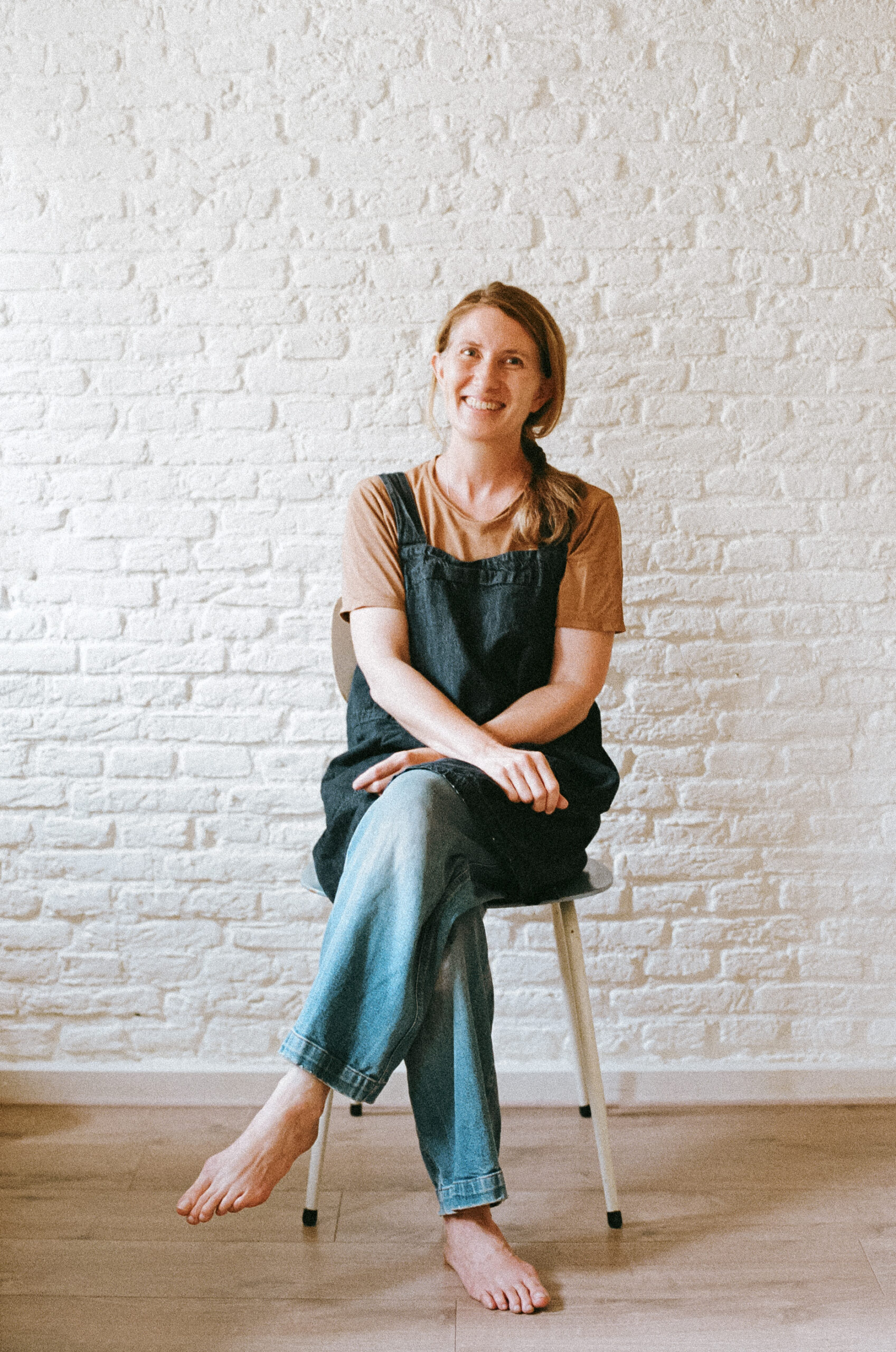
Simone Davies has more than 20 years’ experience as an AMI Montessori educator. Simone is the author of “The Montessori Toddler” and co-author of “The Montessori Baby” and “The Montessori Child” books, comprehensive guides to raising children in a Montessori way. She currently runs parent-child Montessori classes in Amsterdam at her school Jacaranda Tree Montessori. She also has a popular blog, instagram and podcast “The Montessori Notebook” and is mother to two young adults.
